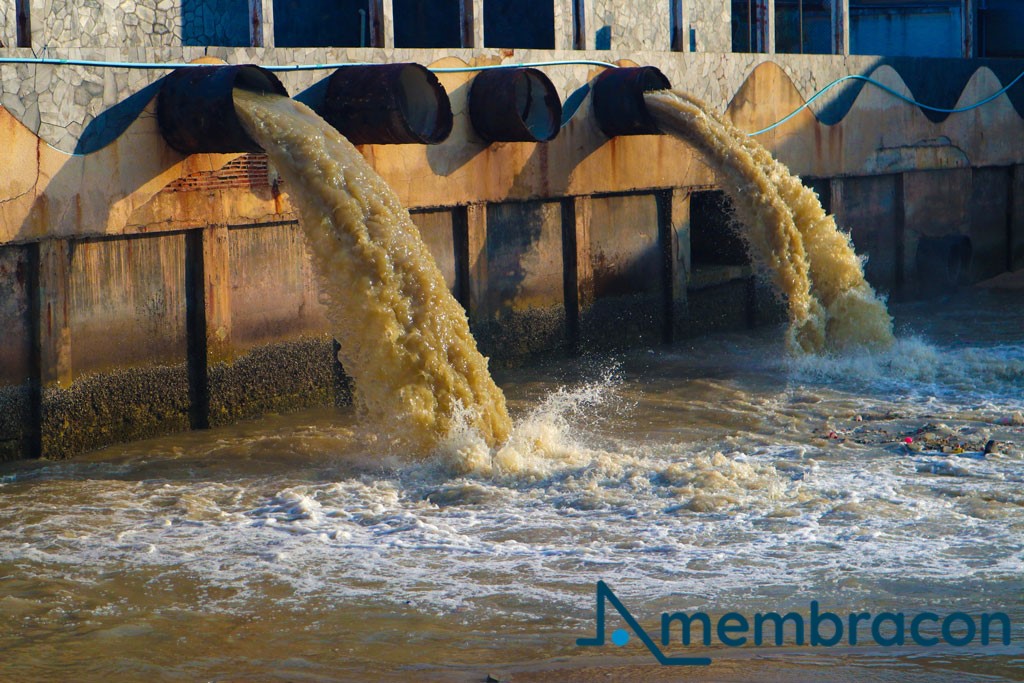Strategic Approaches to Enhance Waste Water Therapy Performance and Minimize Ecological Influence
In the world of waste water therapy, the quest for enhanced efficiency and lowered environmental impact is a perpetual difficulty that requires tactical options. As culture comes to grips with the necessary to take care of water resources sustainably, a nuanced strategy becomes crucial. The integration of innovative therapy innovations, energy-efficient procedures, source recuperation approaches, boosted nutrient removal methods, and wise tracking and control systems represents a multifaceted structure for resolving these pressing issues. What exists at the core of this complex internet of strategies is the possible to change the method we approach waste water therapy, not simply as a process of disposal, however as an important opportunity for innovation and ecological stewardship.
Advanced Therapy Technologies
Sophisticated membrane layer purification systems have actually transformed advanced wastewater treatment procedures, dramatically improving the elimination of contaminants. This innovation has actually confirmed to be highly effective in getting rid of a broad range of pollutants, including pharmaceuticals, hefty metals, and natural compounds, which are often challenging to get rid of with typical treatment approaches.
Moreover, membrane filtering systems supply numerous advantages over traditional treatment approaches. They need less room, generate higher-quality effluent, and are a lot more resistant to variations in influent water top quality. In addition, these systems are extremely flexible and can be easily incorporated right into existing therapy plants or utilized as standalone units for decentralized applications. As the need for tidy water remains to climb, the adoption of advanced membrane layer filtering modern technologies is important to guarantee efficient and sustainable wastewater treatment practices.
Energy-Efficient Procedures
The assimilation of energy-efficient procedures in wastewater therapy systems is critical for optimizing resource use and reducing functional prices. One key technique to boosting power performance in wastewater treatment is the utilization of sophisticated oygenation systems, such as great bubble diffusers or surface area aerators, which can improve oxygen transfer effectiveness and minimize power intake.
Furthermore, optimizing procedure control and automation through the use of sophisticated sensing units and keeping track of systems can boost total power performance by readjusting procedures in real-time based upon real need and problems. Applying power audits and routinely keeping an eye on power performance signs are vital methods to recognize locations for renovation and track energy-saving campaigns properly. On the whole, the adoption of energy-efficient processes in wastewater therapy not just profits the atmosphere however likewise contributes to long-term price financial savings and functional sustainability.
Resource Healing Strategies
With a concentrate on maximizing source use and sustainability in wastewater therapy systems, the application of resource recuperation methods becomes a critical element in enhancing operational performance. Resource recovery approaches in wastewater treatment involve the recognition and extraction of valuable sources from the waste stream, consequently turning what was as soon as taken into consideration waste into a beneficial property. By carrying out resource healing techniques such as nutrient elimination and recuperation, energy generation from raw material, and the manufacturing of recyclable water, wastewater therapy plants can reduce environmental effect while making best use of effectiveness.

Enhanced Nutrient Removal Strategies
Carrying out advanced nutrient elimination techniques is essential for enhancing the effectiveness of wastewater therapy systems. One of the essential strategies utilized for boosted nutrient removal is the procedure of biological nutrient elimination (BNR), which involves the elimination of nitrogen and phosphorus through organic processes.

In enhancement to BNR, advanced therapy methods such as membrane bioreactors (MBRs) and created wetlands can additionally be utilized to enhance nutrient elimination efficiency. MBRs utilize membrane layers to attain premium effluent criteria by successfully removing nutrients and suspended solids. Built wetlands mimic all-natural marsh procedures to get rid of nutrients via plant uptake, microbial task, and sedimentation. By including these sophisticated nutrient elimination strategies right into wastewater therapy systems, industries and communities can successfully lower nutrient air pollution and shield the environment.
Smart Surveillance and Control Solution
Making use of sophisticated innovation, the assimilation of smart surveillance and control systems transforms the functional effectiveness of wastewater treatment centers. These systems incorporate innovative sensing units and data analytics to constantly keep track of essential specifications such as pH levels, turbidity, dissolved oxygen, and flow rates in real-time. By collecting and assessing this data, operators can acquire important insights right into the performance of the therapy procedures, making it possible for proactive changes to optimize treatment performance.
Smart surveillance and control systems also support remote monitoring capacities, allowing operators to accessibility real-time information and control features from off-site locations. This remote access enhances functional versatility and responsiveness, making it possible for speedy interventions in case of system malfunctions or fluctuations in influent high quality. The anticipating maintenance capabilities of these systems assist prevent tools failures and lessen downtime, eventually boosting the overall reliability of wastewater therapy procedures.
Final Thought
To conclude, critical methods such as innovative therapy modern technologies, energy-efficient processes, source healing techniques, improved nutrient elimination methods, and clever monitoring and control systems play a crucial function in improving wastewater treatment Read Full Report performance and decreasing ecological impact. By applying these techniques, wastewater treatment plants can boost their total efficiency, minimize energy intake, recoup beneficial resources, and make sure conformity with ecological laws. These techniques are essential for lasting and reliable wastewater monitoring techniques.

In verdict, tactical techniques such as advanced treatment modern technologies, energy-efficient procedures, source recovery approaches, boosted nutrient removal techniques, and wise surveillance and control systems play a critical role in boosting wastewater treatment effectiveness and minimizing environmental effect.